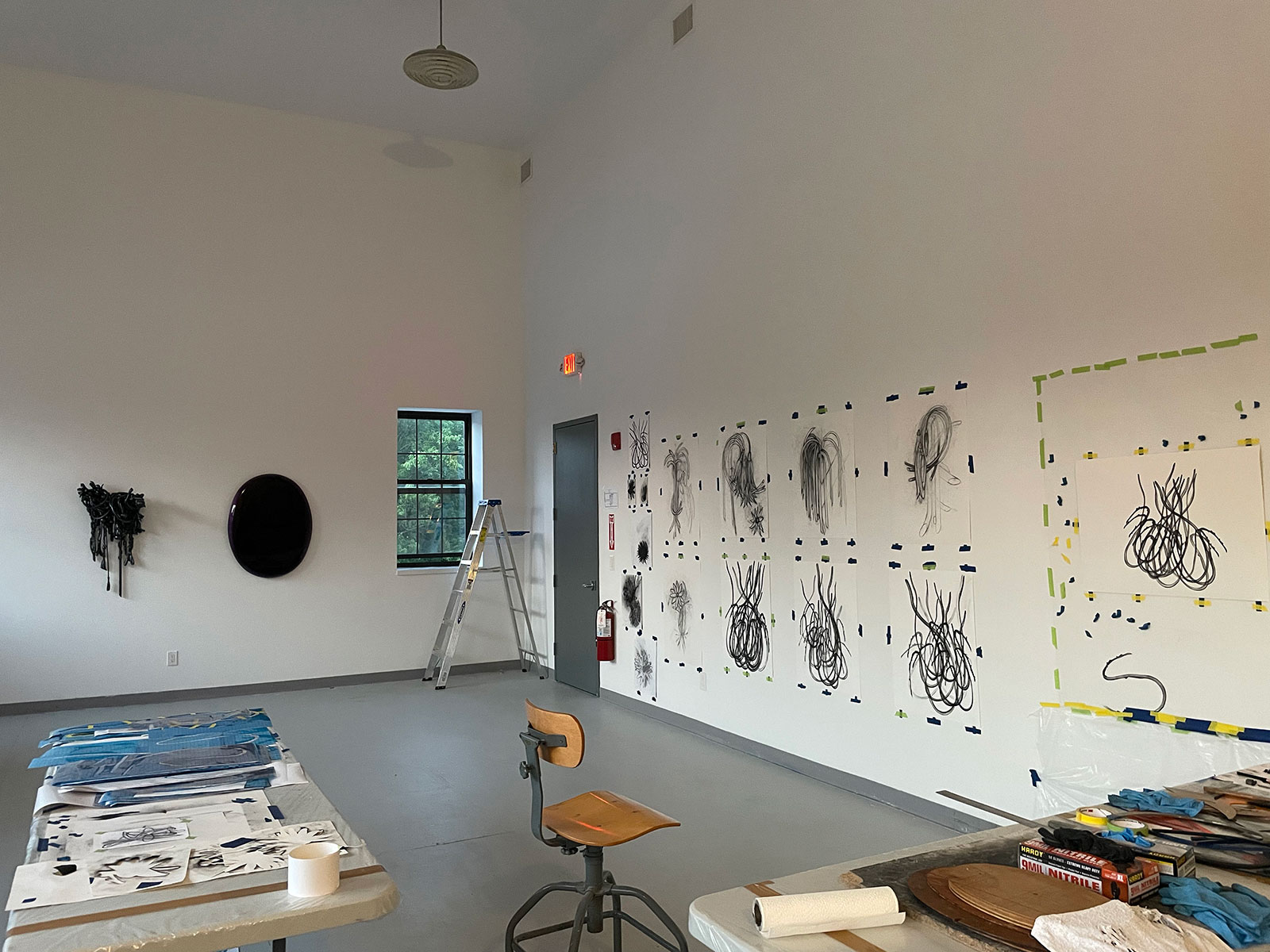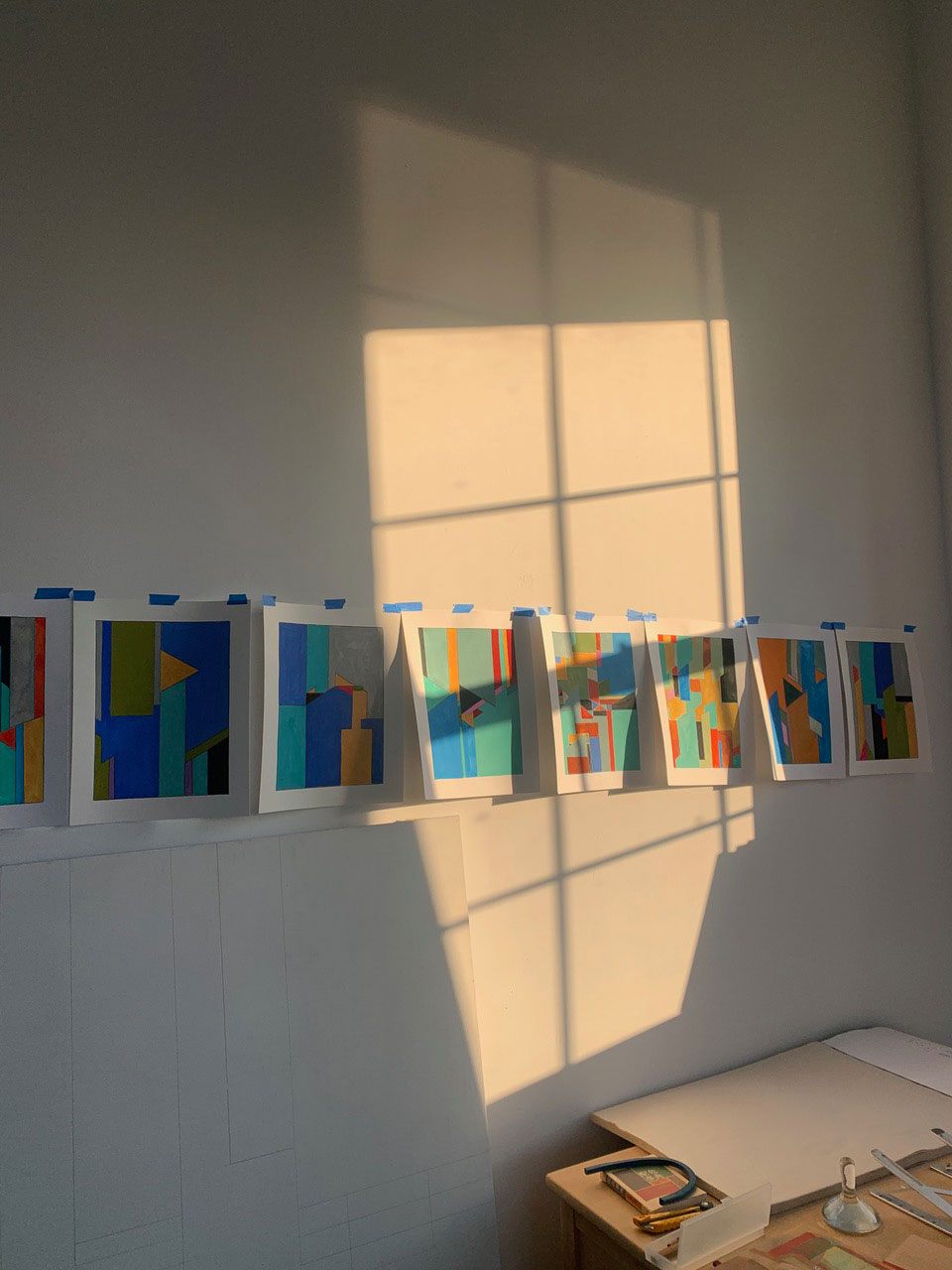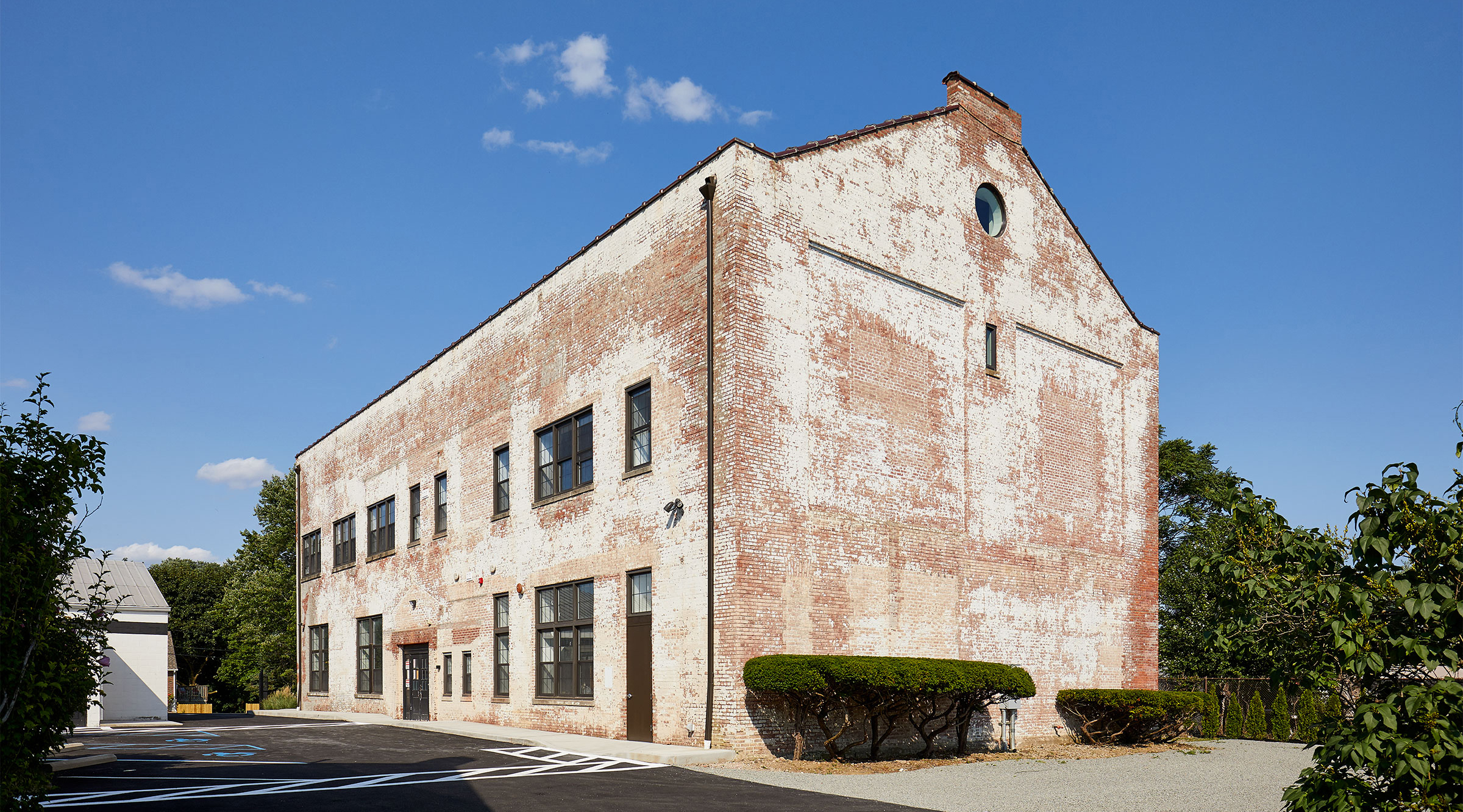A new partnership between Pratt Institute and KinoSaito is bringing together faculty from the School of Art and School of Design to spend four weeks creating work. The artist-in-residence fellowship program launched this May at the nonprofit art center in Westchester County, New York. This year’s two fellows were Fine Arts Professor John Monti and Graduate Communications Design Assistant Professor Anton Ginzburg. Monti is a sculptor who incorporates influences ranging from botanical drawings and religious objects to custom-car culture into his work, while Ginzburg is an artist and designer who often explores visual systems and ideas of place, representation, and modernist form.
“We are thrilled about this incredible opportunity to partner with Pratt’s School of Art and School of Design,” said KinoSaito President Mikiko Ino. “This is our first collaborative artist-in-residence program with a college.”
KinoSaito was founded in 2018 and carries on the legacy of Kikuo Saito (1939–2016) through the support of abstract art across media. Saito was a prolific interdisciplinary artist whose work included boldly expressive painting and design for theater, such as costumes and sets, including in collaboration with Pratt alumnus Robert Wilson. He was also supportive of other artists through mentorship in his teaching work and his studio.
Sarah Strauss, AIA, visiting associate professor of interior design, is a founding executive board member of KinoSaito as well as its treasurer and the director of the artist-in-residence program. As an architect, she was pivotal in the renovation of the former St. Patrick’s Catholic School—which had been the studio of Kikuo Saito—into an art center.
“Kikuo always wanted to have his studio in the school building,” Strauss said. “The large scale of the space, the light reflected off the Hudson River, and the quiet of being out of the city—these elements form the ideal environment for making art. It is a joy for us to continue his legacy by offering these beautiful studios to Pratt faculty.”
In 2021, KinoSaito opened its center in the renovated school in the hamlet of Verplanck on the bank of the Hudson River. Because it only has two artists in residence at a time, it offers tranquility and space to immerse in creative work.
“This type of creative retreat for our faculty is much-needed and allows them to recharge their artistry outside of the classroom through KinoSaito’s vast studio spaces and idyllic location,” said School of Design Dean Anita Cooney. School of Art Dean Jorge Oliver added, “Our faculty responded so enthusiastically to this residency program application process that it was difficult to make only one award.”

The community engagement of the residency through open studios and its concentration on abstract art make it a unique opportunity for faculty. A central goal of the initiative is to nurture the work of Pratt faculty while connecting people from the two schools, so they can make connections and also return to their classes with new ideas for teaching or curriculum.
“The experience of this residency advances one’s practice, both conceptually and within a medium,” Monti said. “These learned experiences always impact my teaching and enrich what can be shared with students in relation to their work in both direct and indirect ways.” He used this residency to focus on researching and drawing pieces inspired by native flora in the United States that are endangered by climate change and land development.
Ginzburg was likewise influenced by the environment in creating work during the residency, focusing on a new series of drawings and paintings that use generative algorithms to explore landscapes informed by his recent travels. “My residency at KinoSaito provided valuable insights and experiences that will help in my teaching at Pratt,” he said. “I want to introduce [these ideas] into my Visual Language and Technology graduate courses. Also, the importance of cross-disciplinary dialogue and collaboration will be emphasized in my teaching. I want to create a stimulating and supportive environment where students can research, explore, and experiment.”

This fostering of interdisciplinary collaboration is important to the new program, offering an opportunity for art and design faculty who may not meet on the Pratt campus to connect on ideas or share their teaching perspectives.
“At the end of a typical studio day, we would often visit each other in our studios,” Monti said. “Conversations would be had about our work, influences, interests, mediums, and techniques. As visual artists, we discovered commonalities as well as differences within our individual practices.”
Ginzburg added, “I think it is a great initiative for interdepartmental exchange. John is a thoughtful and dedicated artist. We had a chance to talk about our ongoing projects on several occasions and exchange some feedback. Our conversations about our work were an important part of the experience.”
